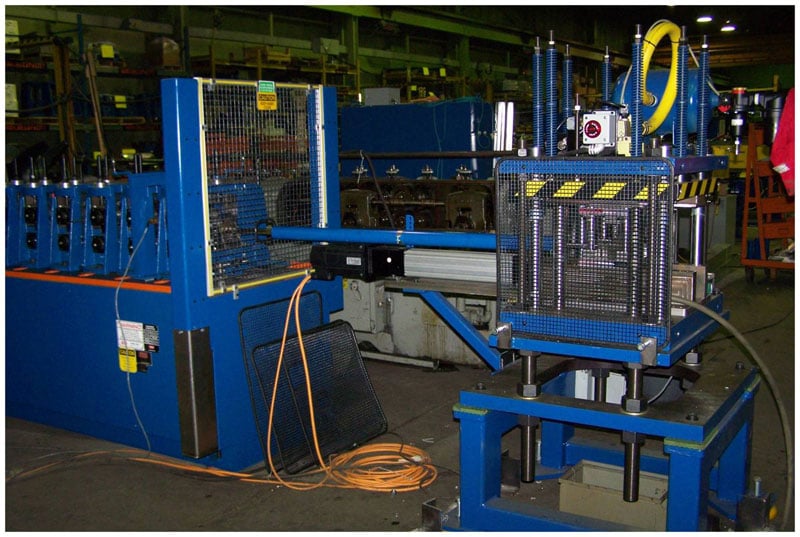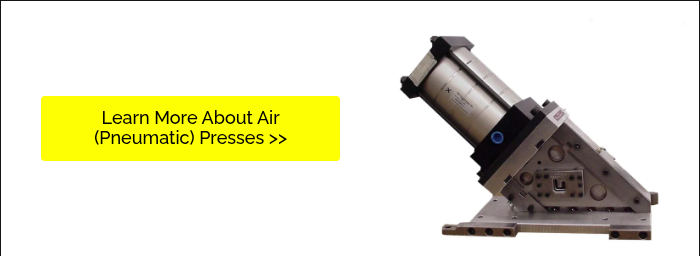In this series on our blog, we'll go through each press type one by one and discuss their features, advantages, and disadvantages and how all those elements make them the right choice for certain applications. In this post, we'll focus on the disadvantages of air presses in particular roll forming applications and operations.
Air Presses - Part 4
Potential Disadvantages of Air Presses
- Limited Force Output: Air presses generally produce less force than hydraulic or mechanical presses, making them unsuitable for heavy-gauge materials or high-tensile applications.
- Inconsistent Force: Compressed air can vary in pressure, leading to less consistent force delivery compared to hydraulic systems.
- Energy Efficiency: Compressed air systems are typically less energy-efficient, with energy losses occurring during compression and air leakage.
- Speed Control Limitations: While fast, air presses may lack the fine-tuned speed control offered by hydraulic presses, which can be a drawback in precision-heavy operations.
- Noise and Vibration: Can produce significant noise and vibration, which may require additional measures to mitigate.
- Dependence on Air Supply: Their performance is entirely reliant on a steady and sufficient supply of compressed air—any interruption can halt production.
- Precision: Achieving precise control over the stopping position can be challenging without additional mechanisms like solid stop blocks.
- Maintenance: May require frequent maintenance, especially in high-use scenarios, due to wear on the bladder or cylinder components.
- Tonnage: There can be a loss of tonnage or force with longer strokes, depending on the design. A downside to air process is that in the case of a bladder style press, the tonnage rating is at 100 PSI at a half-inch stroke. Most bladder presses can go about three inches a stroke, and the more stroke on a bladder press, less tonnage you get. Just because you have a 20-ton press, you're not actually getting 20 tons. If you use an air cylinder type, you may not be able to get that much tonnage out of that cylinder.
While air presses offer precise and consistent force ideal for applications requiring accuracy and control, manufacturers should consider the potential drawbacks of these machines to ensure the chosen press type aligns with their specific roll forming needs and production goals.
In some operations and configurations, a different type of press might be more efficient or provide added benefits. Be sure to visit our other guides to mechanical presses and hydraulic presses to learn which type of press might be best for your roll forming operation.




